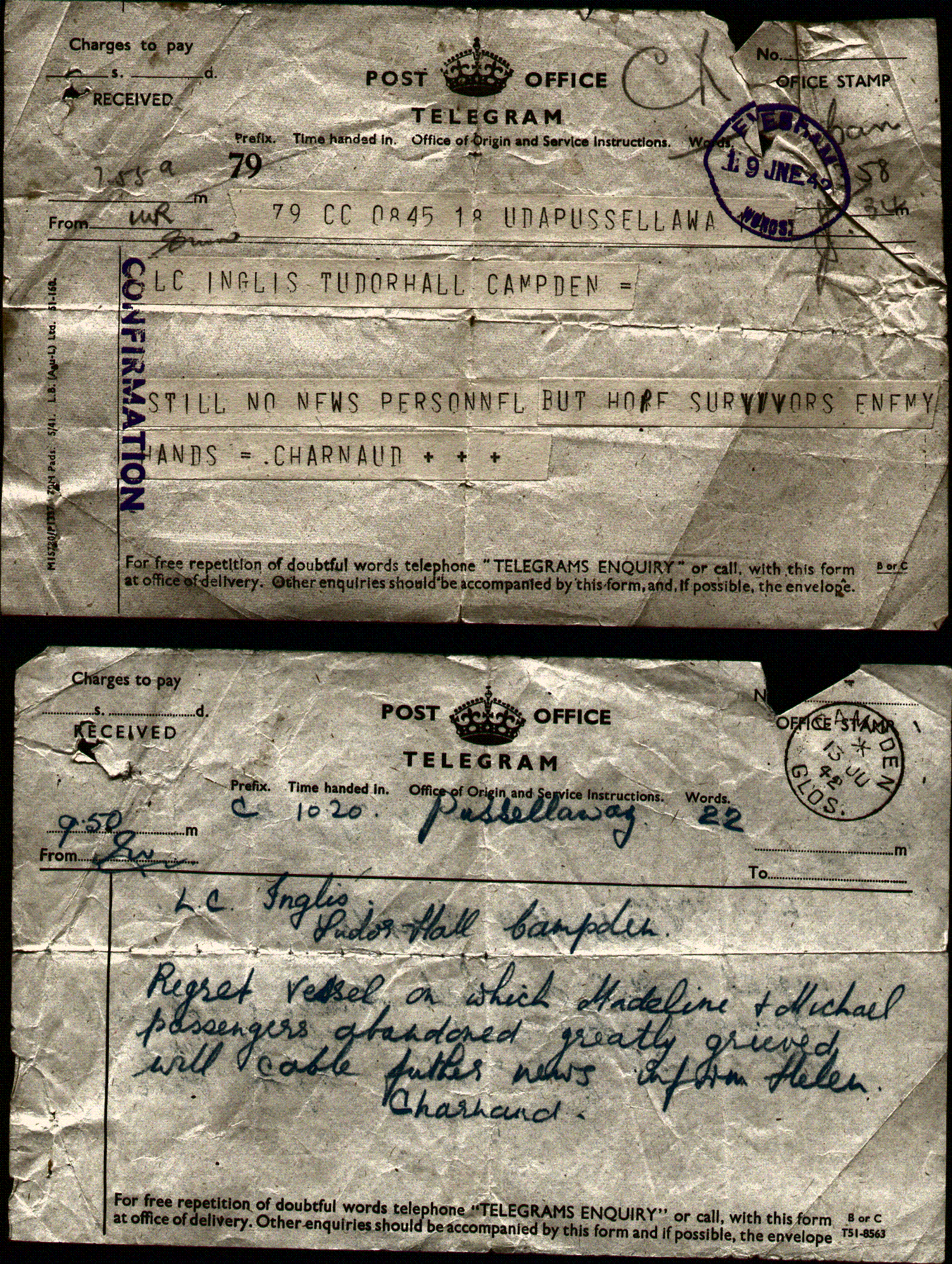surface. There was also a small side door cleverly concealed to allow the gun crew to sneak in quickly in case of her being challenged by a British warship as to her identity.. On the small space of deck were rails from which a searchlight could be run out from amidships. There was also a large ventilator which looked as if it had been cut in two vertically and was hinged, and it probably concealed an anti aircraft gun. The funnel too had a telescopic device for altering its height, possibly part of a scheme for varying the ship’s silhouette. Just aft of the bridge was a very large rangefinder, and as mentioned before, we could see above the man strapped on the top of the mast who was constantly rotating in his seat and viewing the horizon with his large binoculars. He claimed to be able to see smoke from a distance of 35 miles on the horizon. Amidships on either side were twin torpedo tubes, and astern there were facilities for minelaying. .
Below decks there was a first class hospital with a surgeon aboard who attended to the shrapnel wounds of Messrs Stewart and Walker. I was thankful that I had no need of his services, and had taken quick evasive action when the firing started. The following day the surgeon was in demand again, but this time to deliver a baby called Joseph Mok to a Chinese passenger! In this he was assisted by our Australian stewardess Mrs Gleason. A young 18 year old cadet from the “Nankin”, an Australian called Crocker was also treated for a heart attack that he had suffered during the engagement. We were also informed that they had on board an excellent well equipped workshop to undertake routine repairs at sea.
Twice Captain Stratford was invited to the Wardroom to have drinks with the officers who were always courteous and showed no hatred whatsoever to the British, but they commented that they thought Churchill was a bad man working hand in glove with the Jews. They advised Stratford not to drink the tea, as it would probably make him ill, but it was the best they could get in Germany because of the British Blockade. They were all looking forward to getting the proper stuff, and other food supplies from the “Nankin” when we met up again. He was questioned about some details of his ship, and these were entered on a form, but that was as far as any interrogation went.
On the 14th May we met up with the “Regensberg” a large four masted Nord Deutsche Lloyd freighter of 11,000 tons which was being used as a prison and supply ship. We lay about 1/4 mile apart and women and children such as myself were lowered in the large wicker basket into a launch to be transported to our new home. All the other prisoners were ferried across during the course of the morning in a steady orderly fashion in large inflatable dinghies that were towed by the launch. The crew of the raider gave us an enthusiastic send off with a lot of cheering and jollity. I suppose they were quite glad to see the back of us for being a bother and distraction from their work of preparing for attacks on allied shipping, which would be difficult with all the women and children aboard. Whilst all this was taking place the “Nankin” too was also lying about the same distance away, with steam raised and listing to starboard with a large patch on the port bow over the hole which had been damaged by the shell exploding..
We were not sorry to leave the “Thor” with its cramped hot and stuffy living quarters. The crew had been very polite, courteous and as correct as possible, but after all she was a fighting ship, and we as prisoners were very much a secondary priority and a nuisance. On the Regensberg we were to find more space, a more relaxed regime, and also we were coming to terms of just what being a POW was. There was obviously the loss of liberty and we were now in the power of the enemy who could move you and treat you in any manner that was quite out of our control. So far living conditions had been very spartan, but at least the crew were all very helpful in the proper correct
Page 3/8 Next Page


